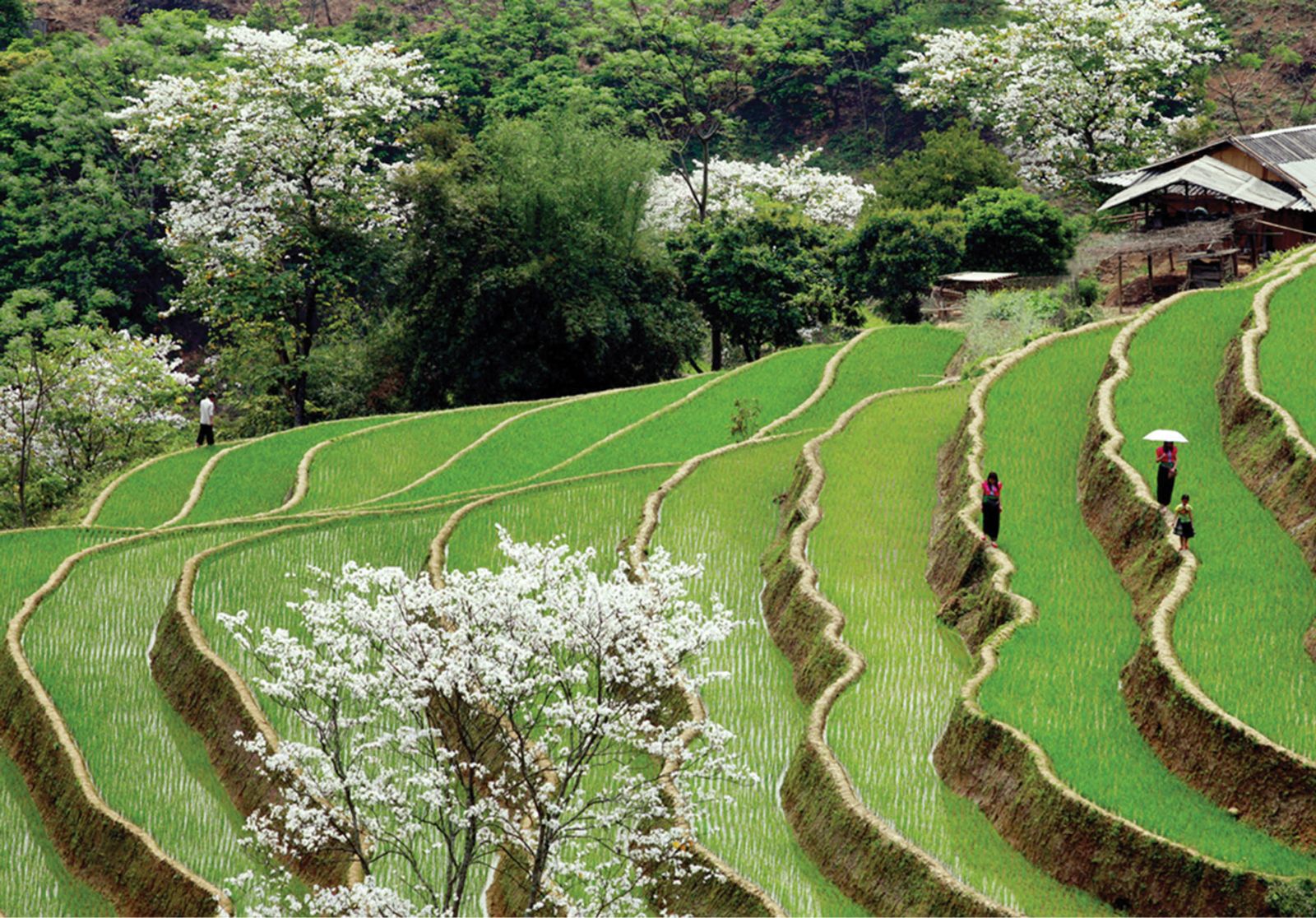
Rice and flowers season in Yen Bai
Being those who love Bhutan, the country where people prefer Gross National Happiness to Gross Domestic Product, we felt curious when we heard that Yen Bai Province would do the similar thing: raising the “happiness index” for people.
We were even more excited to hear Mr. Do Duy Tan, Party Secretary of Yen Bai Province mentioned Hue as a leading breakthrough: “Currently Thua Thien Hue is following this direction, i.e. developing tourism while protecting and conserving environment. It doesn’t sacrifice at all costs for development. So will Yen Bai. Our province will develop environment-friendly tourism, too.”
The new philosophy for development
In order to achieve the “happiness index” that is clear-cut and quantifiable, Yen Bai Province has set a specific objective: “Greenness, harmony, identity and happiness.”
We did spend some weeks visiting villages in the Western North to find out that the image of Bhutan can be found not only in Yen Bai, but also in many other areas. It turns out that at some point it is the reality of life that will lead to new philosophies for development.
While people in the city are fighting for square meters of land which cost the income of a lifetime in other areas, in the Western North, we are allured by villages as green and clean as parks. Do not look at them with “urban eyes.” Living there in peace and calmness is their happiness.
“Highland people and ethnic people in Yen Bai have low spending needs. They just need a safe life from natural disasters such as storms and floods. Attaching their lives with the forest, they do not want to leave their place to earn their living elsewhere. As for education, the district now has boarding and semi-boarding schools for their children to attend and to be cared for. Their children are therefore enjoying going to school. Their parents feel satisfactory because their children can eat, study and play. Their other happiness is healthcare and new roads to take,” said Mr. Do Duc Duy when discussing the “happiness index”.
Bits and pieces of Bhutan in the Western North
We were so excited when we arrived at Sin Suoi Ho Village at the foot of the majestic Hoang Lien Son range. The whole village was like a huge orchid garden. That local forest orchid species had a strong beauty.
Orchid pots in bloom could be seen everywhere in the village amidst clouds. We had the feeling that the orchids in Sin Suoi Ho had the enchanting beauty of female knights rather than of just beautiful women.
It turned out that the story of orchids of Sin Suoi Ho was also very simple. “A few years ago, when we were in the field tending cardamom, Hang A Xa and I saw a few orchids. We brought them home to grow. Unexpectedly they later gave sprigs of flowers as long as 60-80cm,” Vang A Chinh, head of the village, told us.
A few years ago near Tet, a man came asking to buy the orchid. Then by word of mouth, people from the city rushed in to buy it. Now the whole village of 103 households grow orchids. Hoang A Xa household has about 500 pots, Vang A Chinh household has more than 300 pots. Each pot of 5 orchid sprigs costs VND 1 million.
Taking a tour around Sin Suoi Ho, we were even more surprised to see people knew how to rely on nature to beautify their place. Their homestays all had lovely gates made of environmental-friendly materials. Take the notice board at Vang A Chinh’s house for example; the owner’s name and his phone number were made of stone attached to a wooden board.
Meanwhile, Hoang A Xa's house had a rough wooden board as the gate decorated with orchids, and pebbles were arranged and attached to a wooden board to form the words "Hello Homestay.” Since Sin Suoi Ho became a standard village, many people had come and learned from it. But not all of them could do it as successfully.
In as far as the Western North, we came across the image of Hue, then thought about Nam Dong and A Luoi, the two mountainous districts of Thua Thien Hue. Some villages there have done community-based tourism very well. But with their well-conserved beautiful landscapes, they deserve more as pieces of Bhutan in the wild. Their local people are rich in cultural identity. Nature and culture are the foundation for sustainable development.
Western Thua Thien Hue should not follow the race of GDP like lowland areas. Its mission is forests, water sources, lungs for the plain and the source of oxygen for the city. As for those who were born in the forest, let them live happily with their forest in their own way just like the development philosophy of the remote country of Bhutan.
Story and photo: Le Duc Duc